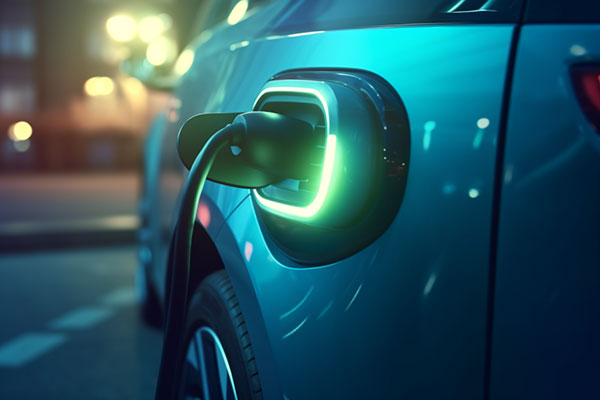What are the different types of EV charging?
- What is Level 1 EV Charging?
Level 1 charging is the most basic and accessible form of charging. It involves plugging your EV into a standard household socket using the charging cable provided. Level 1 chargers plug straight into a standard 120-volt (V) AC outlet and typically deliver a power output of 1.3kW to 2.4kW, providing a charging rate of around 2 to 5 miles of EV range per hour of charge. This form of charging is almost exclusively used in residential settings due to its relatively low power output, which makes it the slowest method of charging your EV. Level 1 charging is, however, the most cost-effective, and charging from home, you can be smart with charging in several ways. For example, charging overnight during an electricity provider's downtimes can be a great way to save money. This level of charging suits scenarios when your EV is parked in the same place for a long time but is not suitable for when relying on short bursts of charging time. Our
EV charging cables are a great example of level 1 charging in its purest form.
Level 1 EV charging overview: It is readily available and requires minimal infrastructure investment. It is suitable for overnight charging and low daily driving needs.

- What is Level 2 EV Charging?
Level 2 charging significantly improves charging speed compared to Level 1 due to a sharp increase in power output, with most chargers operating at 208-240 (translating as 3kW- 19kW of AC power). The result is that depending on the vehicle and charger capacity, Level 2 chargers can deliver a charging rate of around 18-28 miles of range per hour. We are equating to nearly five times the range of Level 1 chargers. This form of charging requires installing a dedicated charging station, though products like our flagship residential charger, the
LUX AC Home Charger, with quick set-up times, make this easy. Due to its increased power output and quicker charging rate, Level 2 charging is often also found at public charging stations, workplaces, and commercial settings; the
Lumina AC Public Charger is a great example of our Level 2 solution for all scenarios outside of the home.
Level 2 EV charging overview: Offers a faster charging speed suitable for installation in several scenarios, including homes, workplaces, and public charging stations.
- What is Level 3 EV Charging (DC Fast Charging)?
Level 3 charging takes the power levels even further. Often referred to as DC fast charging or supercharging, this charging mode operates at an impressive 400-900 V, meaning EVs can be charged at 3 to 20 miles per minute. This enormous power difference means that very few residential properties possess the high-voltage supply needed for this form of charging. Level 3 chargers are commonly found in public spaces, such as refueling stations. The key difference in this charging method is that it utilizes direct current (DC) instead of alternating current (AC), which is why we see such a drastic escalation in charging rate. Level 3 chargers can provide a charging rate of approximately 80% of the battery capacity in 20 to 30 minutes; because charging downtime is so heavily reduced, it is ideal for long journeys and on-the-go charging. A great example of level 3 charging is the EVbee DC 180, providing ultra-fast 180kW DC charging with retrofittable power levels and a modular design for easy maintenance.
Level 3 Charging overview: Drastically reduced charging times allow for rapid charging on the go.
- What is Level 4 EV Charging (Ultra-Fast Charging)?
The latest advancement in EV technology is seen with Level 4 charging. This charging type goes even further than Level 3 and enables ultra-fast charging times, significantly reducing the time required to charge an electric vehicle. With a power output of 800 V and sometimes even higher, this formidable charger can give EVS over 200 miles of range in just 15 minutes. Developments like this can revolutionize the EV industry today and testify to how far we have come in this dynamic industry. Of course, it is worth noting that Level 4 charging infrastructure is still under development and may not be widely available. Check out our article, the Megawatt Charging System, for more information about this exciting new charging method to look out for.
Level 4 EV charging overview: The most advanced form of charging promises ultra-fast charging times for the future, further enhancing the convenience of electric vehicles for any scenario.
Understanding different EV charging levels is crucial for optimizing the convenience and usability of your EV. Each level of charging offers unique benefits and caters to different driving needs and lifestyle requirements. By considering factors such as driving habits, local availability of charging infrastructure, and vehicle compatibility, you can decide on the most suitable charging level for your electric vehicle.
